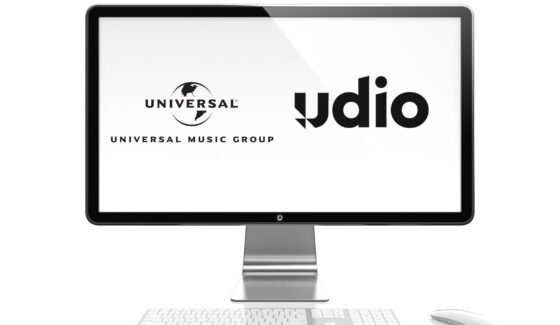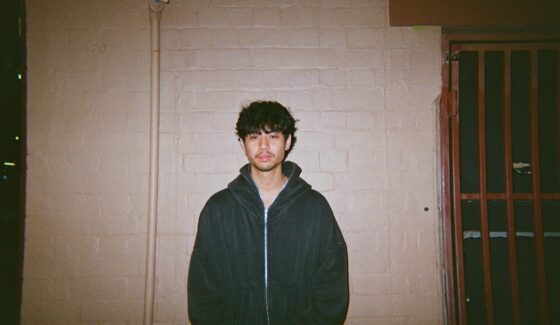Bigsound 2025: Jonathan Heeter Shares How Artists and Labels Can Break Into the China Music Market

As Bigsound 2025 kicks off in Brisbane, industry leaders from around the world are sharing insights on the future of music. Among them is Jonathan Heeter, Managing Partner of Black Pine and veteran executive with over 20 years of experience in China’s music and brand landscape. In his guest feature for AAA Backstage, Heeter unpacks the opportunities and challenges of the China music market—a territory with 1.4 billion potential listeners, its own unique digital ecosystem, and a growing appetite for international talent.
How Artists and Labels Should Setup in the China Market
READ MORE: Apple Music Expands Playlist Transfer Tool, Making It Easier Than Ever to Switch From Spotify
The Chinese music market is equal parts tantalizing and daunting.
China is tantalizing because there are over 1.4 billion smartphones, and on any given day more than 500 million people are listening to music on Chinese DSPs. There are also 143 cities with over a million people, and over 20 billion dollars a year spent by brands on influencers, artists and actors. With 600 million middle class Chinese consumers, there’s plenty of disposable income ready to buy concert tickets, merch, high dollar products, basically anything they really want. When done right, China creates a revenue flywheel with money from streaming, touring, brands, publishing, IP creation and DTC rivaling the scale of the US market.
Of course, China is daunting because it has its own digital ecosystem, which if you’re outside China is difficult to experience, much less understand. The platforms, language, customs, even business metrics are also daunting because they’re so unfamiliar. The fact that China is behind a firewall that prevents access to Spotify, YouTube, Instagram, TikTok, Google…everything digital…doesn’t make it any easier. You (or someone you partner with) must understand an entirely local ecosystem to succeed in China.
China might be daunting, but it’s not impossible. Not even close. Success in China starts with treating the market like a priority instead of a difficult afterthought. You can boil an effective China strategy down to 5 core things: Distribution, Social Media, Social Leverage, Local Campaigns and Market Monitoring.
Distribution. Whether you’re on a label or distributing via a self-service platform, your music is most likely being served to Chinese DSPs already. What your distributor or label probably isn’t doing; however, is pitching Chinese DSPs for editorial, content and marketing resources. Building a relationship with Chinese DSPs is essential to drive consumption, grow your audience and create monetization opportunities. Dua Lipa, Ava Max and other global artists have thrived, doing innovative content and live stream deals with DSPs because their teams built strong relationships with key players in the market.
Social Media. Again, all global social media platforms and channels are blocked in China. If you want to grow a fanbase and make money in China, you need to strategically operate China’s social media stack. At a minimum this includes running WeChat for community, Douyin for virality, Red Note for exposure and NetEase for consumption. While it’s technically possible to operate these platforms from outside China, to get the most out of them you’ll need a team that’s fluent in Chinese, makes content that connects locally, and has relationships with the platforms to create editorial and algorithmic advantages. A wide range of artists including global superstars like Ed Sheeran, regional Asian stars like Galdive and fiercely independent artists like Rare Americans sustain strong China businesses in China with strong social media presences.
Social Leverage. Leverage in China is built by having a measurable and engaged audience on social media. Whether its editorial support from DSPs and social media platforms or brand looks and touring opportunities, an artist’s audience on socials is the litmus test the powers that be use. If you don’t build an audience on Chinese socials, there’s no way to prove the size of your audience, meaning that brands and platforms will be far less willing to work with you. Audience scale is how an artist like Faouzia generates brand and media looks relatively early in her career.
Local Campaigns. Your goal should be to use every release, tour or other marketable milestone to generate new fans and incremental revenue streams. The best campaigns have a local angle, everything from content or marketing materials made specifically for China, to local collaborations A&R-ed with artistry and audience in mind. Again, this is possible to pull-off in house, but it’s much easier with a qualified partner helping with planning and execution. Artists as diverse as Alec Benjamin, Boa, Passenger, Tones and I and Lauv have all grown their businesses in China by consistently executing great campaigns.
Market Monitoring. One of the struggles artist teams and labels have when evaluating China is the lack of “Spotify for Artists” style dashboards. Monitoring the market requires having a team that can use China’s native data ecosystem and contextualize the data for teams that aren’t familiar with China. One example, all major DSPs in China allow listeners to comment on tracks. The number of comments is a core metric because it shows how engaged the audience is with the track. Your social team should have a suite of goals that ladder back from social metrics to streaming projections, so when you get your statements you’re able to evaluate whether they match with what you’re seeing in the market.
While it’s technically possible to do some of these 5 core things outside China, to get the best possible results you’re going to need a partner with boots on the ground to help you. That partner needs to speak the language and have relationships and resources ready to deploy. The strongest partners will be part artist manager, part social media agency and part commercial agent. They excel when working against measurable goals and collecting data, driving monetization through streaming, brands, touring and all kinds of out-of-the-box opportunities.
Even if you’re signed to a major label or large indie, the reality is that you’re going to need a partner besides the label. Major label China teams are stretched to the brink, typically only working a small slice of the roster. But China isn’t about slices, there’s a market there for almost every artist. With 1.4 billion listeners, even a “niche” genre like metal, reggae or folk music could easily have 100 million potential fans to engage.
About Jonathan Heeter / Middle8
Jonathan Heeter is the Managing Partner of Middle8, a marketing agency purpose built to drive growth for music projects across Asia. Previously an executive at Warner Music Group, 88rising, Fender and Dentsu, Jonathan lived in Beijing for 17 years and speaks fluent Mandarin. With a team of strategists and creatives based in Beijing, Middle8 helps clients break in China with an integrated scope of services that includes social media management, marketing campaigns, A&R, editorial and promo. For resources explaining the China market, case studies and more, check out middle8.agency/resources









